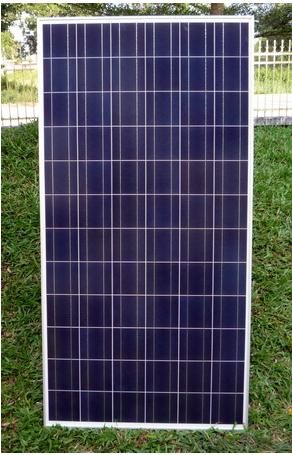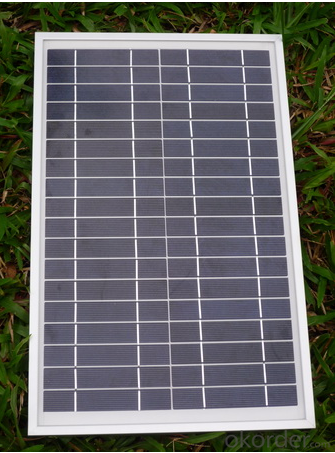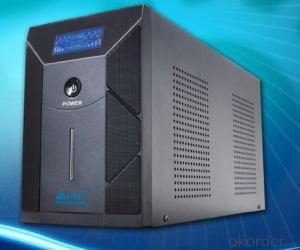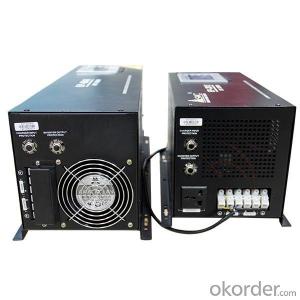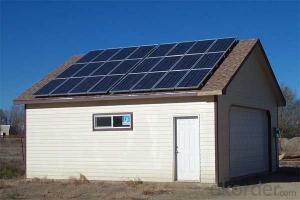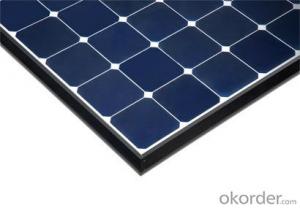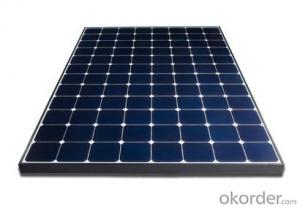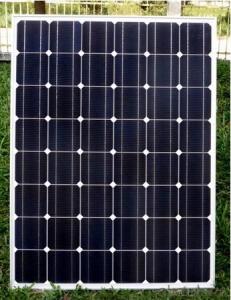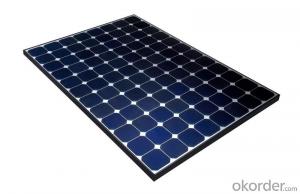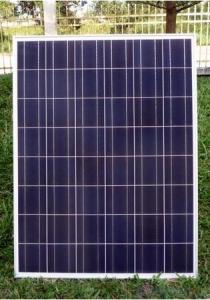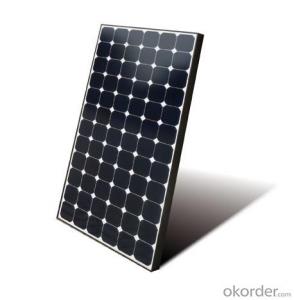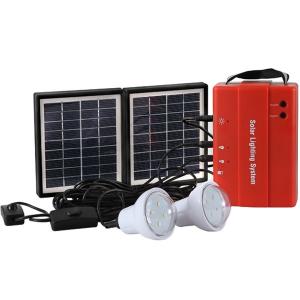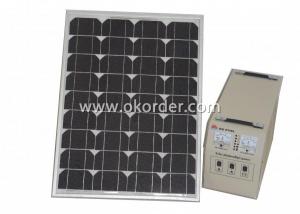Home Solar Energy Systems - CNBM On Grid System 30000W with Certificate UL, TUV, CE
- Loading Port:
- Shanghai
- Payment Terms:
- TT OR LC
- Min Order Qty:
- 50 watt
- Supply Capability:
- 1000 watt/month
OKorder Service Pledge
OKorder Financial Service
You Might Also Like
Specification
CNBM On Grid System 30000W with Certificate UL TUV CE
Product description
They range from small residential and commercial rooftop systems to large utility-scale solar power stations. Unlike stand-alone power systems, a grid-connected system rarely includes an integrated battery solution, as they are still very expensive. When conditions are right, the grid-connected PV system supplies the excess power, beyond consumption by the connected load, to the utility grid.
Connection of the photovoltaic power system can be done only through an interconnection agreement between the consumer and the utility company. The agreement details the various safety standards to be followed during the connection.[4]
A photovoltaic (in short PV) module is a packaged, connected assembly of typically 6×10 solar cells. Solar Photovoltaic panels constitute the solar array of a photovoltaic system that generates and supplies solar electricity in commercial and residential applications. Each module is rated by its DC output power under standard test conditions, and typically ranges from 100 to 365 watts. The efficiency of a module determines the area of a module given the same rated output – an 8% efficient 230 watt module will have twice the area of a 16% efficient 230 watt module. There are a few commercially available solar panels available that exceed 22% efficiency[1] and reportedly also exceeding 24%.[2][3] A single solar module can produce only a limited amount of power; most installations contain multiple modules. A photovoltaic system typically includes a panel or an array of solar modules, a solar inverter, and sometimes a battery and/or solar tracker and interconnection wiring.
The price of solar power, together with batteries for storage, has continued to fall so that in many countries it is cheaper than ordinary fossil fuel electricity from the grid (there is "grid parity").[4]
Off-the-grid is a system and lifestyle[1] designed to help people function without the support of remote infrastructure, such as an electrical grid. In electricity, off-grid can be stand-alone power system or mini-grids typically to provide a smaller community with electricity. Off-grid electrification is an approach to access electricity used in countries and areas with little access to electricity, due to scattered or distant population. The term off-the-grid (OTG) can refer to living in a self-sufficient manner without reliance on one or more public utilities. People who adopt this lifestyle are called off-gridders.[2]
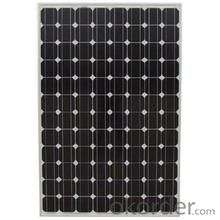
Application
Industrial
Commercial
Residential
Feature
Residential, grid-connected rooftop systems which have a capacity more than 10 kilowatts can meet the load of most consumers.[2] They can feed excess power to the grid where it is consumed by other users. The feedback is done through a meter to monitor power transferred. Photovoltaic wattage may be less than average consumption, in which case the consumer will continue to purchase grid energy, but a lesser amount than previously. If photovoltaic wattage substantially exceeds average consumption, the energy produced by the panels will be much in excess of the demand. In this case, the excess power can yield revenue by selling it to the grid. Depending on their agreement with their local grid energy company, the consumer only needs to pay the cost of electricity consumed less the value of electricity generated. This will be a negative number if more electricity is generated than consumed.[3] Additionally, in some cases, cash incentives are paid from the grid operator to the consumer.
Packaging
With carton and box
- Q: Can solar energy systems be used for heating and cooling?
- Yes, solar energy systems can be used for heating and cooling. Solar thermal systems can be used to harness the sun's energy to heat water or air, which can then be used for space heating or water heating. Additionally, solar-powered air conditioning systems exist that utilize solar energy to cool indoor spaces.
- Q: Can solar energy systems be used in areas with limited access to solar energy education programs?
- Yes, solar energy systems can be used in areas with limited access to solar energy education programs. While education programs can certainly enhance understanding and maintenance of solar energy systems, they are not essential for their installation or operation. With the help of technicians or experts who have knowledge and experience in solar energy, these systems can still be successfully implemented and utilized in areas without extensive education programs. Additionally, online resources and self-study materials can provide valuable information and guidance for individuals in such areas, enabling them to make the most of solar energy systems.
- Q: How does a solar panel generate electricity?
- A solar panel generates electricity through the photovoltaic effect, where sunlight is converted into electrical energy. This process occurs when the photons in sunlight strike the solar cells within the panel, causing the electrons in the cells to be excited and flow as an electric current.
- Q: How do solar energy systems impact the reduction of fossil fuel consumption?
- Solar energy systems have a significant impact on the reduction of fossil fuel consumption. One of the main advantages of solar energy is that it harnesses power from the sun, which is a renewable source of energy. This means that solar energy systems do not require the burning of fossil fuels, such as coal or natural gas, to generate electricity. By using solar energy, we can reduce our dependency on fossil fuels for electricity generation, thereby lowering our carbon footprint and mitigating the negative environmental impacts associated with fossil fuel consumption. Solar energy systems also contribute to the reduction of fossil fuel consumption through the concept of net metering. Net metering allows individuals or businesses with solar panels to sell excess electricity generated back to the grid. This means that during times of high solar energy production, when the system generates more electricity than is being used, the excess energy is fed back into the grid. As a result, less electricity needs to be produced by fossil fuel-based power plants to meet the demand, reducing the overall consumption of fossil fuels. Furthermore, the adoption of solar energy systems can lead to a decrease in the demand for fossil fuel-based electricity, which in turn can drive down the price of electricity. This price reduction can make renewable energy more economically competitive, encouraging greater adoption of solar energy systems and further reducing the demand for fossil fuels. In summary, solar energy systems play a vital role in reducing fossil fuel consumption. By utilizing the sun's energy, solar power systems eliminate the need for burning fossil fuels for electricity generation. Through net metering and the potential for price reductions, solar energy systems contribute to the overall reduction of fossil fuel consumption, promoting a cleaner and more sustainable energy future.
- Q: Are there any risks of electrical shock with solar energy systems?
- Solar energy systems carry potential risks of electrical shock. While generally considered safe, these systems can be hazardous due to the presence of high voltages and electrical currents. Failure to handle or manage them properly can result in accidents. Several key risks are associated with solar energy systems: 1. Installation and maintenance: Improper procedures during the installation and maintenance of solar panels can lead to contact with live electrical components. This can happen when safety protocols are not followed or when untrained individuals attempt to handle electrical connections. 2. Equipment or wiring malfunctions: Defective inverters, wiring, or other equipment can increase the risk of electrical shock. Poor installation practices or insufficient maintenance can also result in electrical faults, exposing individuals to dangerous currents. 3. Fire hazards: While not directly related to electrical shock, faulty electrical components or wiring can raise the risk of fires in solar energy systems. Attempting to extinguish such fires without shutting down the electrical system first can further worsen the risk of electrical shock. To minimize these risks, it is essential to adhere to proper installation and maintenance procedures. This often involves seeking assistance from licensed professionals. Furthermore, individuals working with solar energy systems should be trained in safety protocols, including the use of appropriate personal protective equipment and ensuring proper grounding of electrical systems. Regular inspections and maintenance are also crucial to detect and address any potential electrical hazards.
- Q: What is the role of solar energy systems in reducing air pollution?
- Solar energy systems play a crucial role in reducing air pollution by replacing traditional fossil fuel-based energy sources that release harmful emissions into the atmosphere. Solar power generation is a clean and renewable source of energy, producing no greenhouse gases or air pollutants during operation. By utilizing solar energy systems, we can significantly decrease our reliance on fossil fuels, thereby mitigating air pollution and its associated health and environmental hazards.
- Q: Can solar energy systems be used for powering disaster relief efforts?
- Yes, solar energy systems can be used for powering disaster relief efforts. Solar power provides a reliable and sustainable source of energy, especially in areas where the conventional power grid may be disrupted or unavailable due to a disaster. Solar energy systems can be quickly deployed and can provide electricity to power medical facilities, communication systems, lighting, and other essential equipment during relief operations. They are also cost-effective in the long run and reduce dependency on fossil fuels, making solar energy an ideal solution for disaster-affected areas.
- Q: How does a solar energy system convert sunlight into electricity?
- A solar energy system converts sunlight into electricity through the use of photovoltaic (PV) cells. These cells are made up of semiconductor materials, such as silicon, that absorb the photons present in sunlight. When the photons strike the PV cells, they knock electrons loose from their atoms, creating an electric current. This current is then captured and harnessed to generate usable electricity, which can power homes, businesses, and other electrical devices.
- Q: How does solar energy storage work?
- Solar energy storage works by capturing and storing the energy produced by solar panels during periods of sunlight. This stored energy can then be used during times when sunlight is not available, such as during the night or on cloudy days. Typically, solar energy storage systems use batteries to store the excess energy generated by the solar panels. These batteries store the energy in the form of chemical potential, which can be converted back into electricity when needed. This allows for a continuous and reliable supply of solar energy, even when the sun is not shining.
- Q: Can solar energy systems be used for powering off-grid eco-cities?
- Yes, solar energy systems can definitely be used to power off-grid eco-cities. Solar panels are a sustainable and renewable energy source that can efficiently generate electricity from sunlight, making them ideal for eco-friendly communities. By installing solar panels on rooftops or in open spaces, off-grid eco-cities can harness the power of the sun to meet their energy needs. Additionally, advancements in battery storage technology allow for the storing of excess solar energy, ensuring a continuous power supply even during periods of low sunlight. Overall, solar energy systems offer a viable and environmentally friendly solution for powering off-grid eco-cities.
Send your message to us
Home Solar Energy Systems - CNBM On Grid System 30000W with Certificate UL, TUV, CE
- Loading Port:
- Shanghai
- Payment Terms:
- TT OR LC
- Min Order Qty:
- 50 watt
- Supply Capability:
- 1000 watt/month
OKorder Service Pledge
OKorder Financial Service
Similar products
Hot products
Hot Searches
Related keywords


